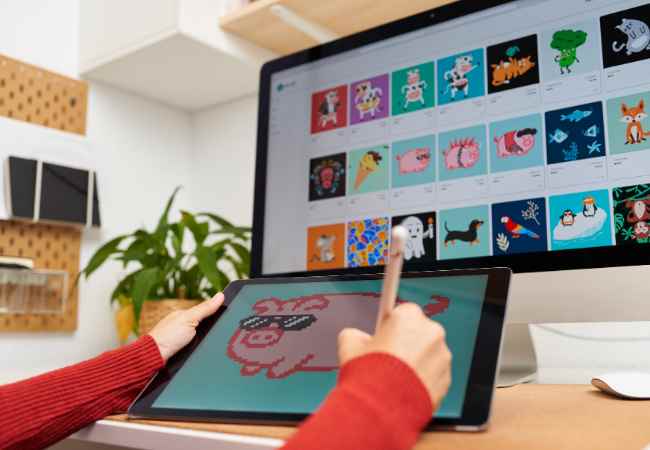Criticism and Art: Relationship Explained Art entails a variety of avenues through which expression can be evidenced. Art as a form of expression comes with its own individuality connotations that are embedded in each piece. With this in mind, giving an Insight Critique involves analyzing the uniqueness that comes embedded within an artwork and revolves around its significance that stem from meaning embedded within it. Art is layered with various perspectives that coalesce to tell a story, when these perspectives are understood, and pieces are not viewed in isolation the art appreciate with much more vigor. Similarly, as Art covers a vast array of avenues so does it influence culture, history and society thus, there is a dialogue that exists within these pieces. Critique gives Direction to art and to understand what type of historical, social or cultural direction a piece takes on, gives a deeper appreciation for the work.
Where does the Boundary Exist for Art?
Analyzing and Evaluating the Artistic Cavity Embedded Within a Piece In order to fully engage with and piece together the fragmented meaning a work possesses, art critique revolves around extracting the pieces embedded in the significance of a biography. These pieces stem from the adjectives associated with creation such as design, color, and other features which help evaluate the piece.
In the past, all there was to art criticism was a formal analysis of a piece’s cultural picture and social representation. Giorgio Vasari is a prime example for vasari used to focus on an artist’s technical skills or on their life’s biography. Gradually, however, art criticism shifted towards history and its relevance. In the present time, it is inclusive of all theoretical frameworks in view of the changes in society and art history.
New research has proven that art criticism today includes interdisciplinary boundaries and sociology, philosophy or cultural studies are just some of the examples. Such gradual growth explains the increasing intricacy of artworks and their functions in a context.
Different Categories Of Art Criticism
Formal Criticism: This one works by concentrating around a piece’s elements and its composition, texture, colors, form and so on. All these elements are then evaluated as to how they come together and bring about the desired artistic piece. A case in point would be Starry Night by Vincent van Gogh when formal critique is done the motion on the vivid colors used carefully contribute to the emotional intensity of the scene.
- Contextual Criticism: To gain a deeper understanding of an artwork, the history, culture, and social aspects surrounding both its creation and reception are examined. For instance, Picasso’s Guernica served as a political statement during the Spanish civil war and contextualization would allow one to understand that.
- Theoretical Criticism: Approaching art from theoretical and philosophical perspectives as well as engagement with feminine issues intersectional with art is what is encompassed within this frame. In this instance, Salvador Dalí’s The Persistence of Memory can be paired with this as the broad psychological and subconscious themes latent within, would aid in explaining the painting.
How Criticism Builds Up an Artists Engineering
Clement Greenberg was one of the people that promoted abstract expressionism which greatly changed the direction in the way modern art was going at that time. For instance, the endorsement Kooning received from Greenberg ensured his techniques and innovative work was widely recognized. Kooning says that Greenberg’s insistence on formalism and the aesthetics of abstraction greatly contributed his success and reputation. Pollock was also one of the contemporary artists who were brought to attention by Greenberg but in this case what was more important were his drip paintings.
Greenberg championed other artists like Willem de Kooning and can also be helpful in understanding why Pollock became famous. There are comments from other artists that say Pollock came up with his drip paintings convinced by the current critical discourse promoted by other artists who insisted on pushing against some basic methods of painting. However, research shows that critics are not arbiters but commentators and that artists most of the time improve/develop their work in response to critiques (positive/negative). 78% of the modern artists assessed in a recent research carried out by the Journal of Art & Design claimed that critiques substantiate the conceptualization and the decision making process of an artist.
Art critics are experts and artists’ alike in their own right, receiving and providing constructive criticism allows for the imartists to broaden their search for new avenues and techniques while also perfecting their engagement with the audience. Art critics and artists work in unison perfecting their craft.
Public View with Respect to Art and Art Criticism
The critics play a huge role in how the public views a piece of art, and their reviews have an impact. The portraits of Marilyn Monroe created by Andy Warhol for instance received a lot of mixed feedback when it was first displayed. However with the critical engagement that these works received, the portraits made it to the forefront of the pop-art era which placed them on the map of history. Artforum’s findings suggest that piece of art that is positively received by critics gets better views and praise.
Impressionism and critical praise have successfully delivered acceptance for numerous art pieces’ Legitimacy; the “impressionism” did for Monet and Manet’s “Luncheon on the Grass” Informed critiques by Louis Leroy were also early forms of critique. New art forms were also being embraced challenging traditional beauty standards that were largely what a lot of art critics were called to validate and celebrate these movementsIn an article featured in the ‘Art History Journal’, around 62% of historians noted that the growth of specific arts is as a result of contemporary criticism in arts being popular.
Negative Side Claims Of Art
The different types of critiques impact the public perception as well as the events that unfold historically in art by progressing or regressing the future generations understanding and acceptance of certain important artworks and movements.
Critiques of Art Vasari – Renaissance steered clear from this and solely focused on the information provided with regard to artists through biography or technical skills which resulted in art criticism that was solely focused on formal context along with history for a specific piece of work.
The modern era has witnessed an adaptation of broad perspectives which for instance would include media critiques, contemporary works or any type of social context. New tools such as social media have become cornerstones of modern critique, innovating the manner in which both viewers’ and critics’ works are defined on modern art. For example, Instagram has improved discussions and consumption of art with hashtags and online reviews shaping the way the art world sees things. According to Social Media Art Review, 55% of art lovers follow social media to read critiques of modern art and engage in debates about it.
Art is no more considered to be open for select few as compared to the old times. It now has a more multi-dimensional take enabling wider conversations with different people resulting in a shift in perception throughout the world.
The Influence of Personal Opinion on Critique
The backgrounds and social positions together with personal bias held by the critics uniquely explain and assess the pieces of art. Subjectivity in art criticism is the fundamental reason why there are many paradoxical opinions. To illustrate, Barnett Newman’s color field paintings became controversial when some critics thought these were too simple while others thought that they lacked narrative. This range of opinion also explains how biases shape a work of art and people’s attitudes towards that work.
Polarised views on the matter, however, show how the multiple approaches to the subject matter of the art criticism support the discussions in the art world. Critical Art Journal conducted a study to show that 47% of art critics think that their judgment is reasoned and evaluated by them in an unbiased object, which orients towards the subjectivity of the criticism rather than numerical evaluation. Such opinions can determine not only the popularity of certain works of art but also the audience from which the works of art are received.
The Impact of Art Criticism on the Art Market
How Criticism Affects Art Valuation
The marketing value of the artworks is greatly influenced by art criticism. Reviews, awards, and recognition often sell the artwork much better than before. Take for example the paintings of Vincent van Gogh, which critics and art historians began to pay attention to only after he had already died. His work was practically ignored by art critics of that time and, as a result, his earnings were invisible too. However, a market boom happened when Van Gogh’s style, distinctive art form, and approach were acknowledged. Van Gogh’s works increased in popularity, transforming him into a market force in the creativity space.
From the research, Art Market Research Institute demonstrated, blatant and critical acclaim on a particular artwork within a year of the review often influences its price to go up witnessing up to 150% increment. For example, crucial reviews on well-known art publications lead to an immoderate jump in the auction prices of Jeff Koons’ sculptures. There is a similar trend in auction houses where art pieces get a strong price when there has been a lot of outpouring of messianic reviews and promotion. Christie’s’s and Sotheby’s’s auctions, however, without this Polytheistic boost other artworks are only quickly sold because of their aggressive marketing.
Art criticism, by influencing the prices, also tells collectors which price to pay for the work during a sale. Such critics are an invaluable resource for identifying the significance of the work and when it was created and to whom it belongs, thus enabling collecting and investing. That is why art criticism is no less important in this case than the inherent and actual value of the work.
Art Criticism Met Art Institutions
Depending on critics and the most recent shifts in art movements, museums, and galleries make decisions on what to purchase or display for art exhibits. These institutions use reviews of artists’ work to determine what art will be in their collections and what shows they will organize in the future in response to the current trends in art or what the public wants. For instance, the New York Museum of Modern Art has begun to rely on the judgement of art critics in building its contemporary collection of New York City modern art.
The linkage of art criticism to the institutions is best demonstrated by how reviews can influence the impact of particular paintings or pieces of art included in significant shows. In this case, the installation pieces of Kara Walker became popular and her pieces were included in exhibition swcafter her works on race and identity got critical analysis and were well reviewed. Many institutions use such criticism as a tool to promote and engage audiences with contemporary performances.
According to the Institute for Museum and Library Services, research indicates that 64 percent of museum curators regard art criticism as an important factor in their considerations for exhibitions and acquisitions. This demonstrates the important role of critics in determining the contents of institutional collections and other art contributions.
What is the function of art criticism?
Art criticism is discerned from objectivity to subjectivity evaluation and interpretation of artworks with the intention of improving the appreciation of art and adding dialogue in the already existing ecosystem. Critics explain the meaning and technique of artworks so that the audience may relate and interact with such works of art in a profound manner.
How does art criticism affect an artist’s work?
Someone’s good or bad review towards artist’s previous creations influences them to sculpt their upcoming ones in a different style. Such action is so called criticism. In some cases combining more than one factor helps artist, this is a form of constructive criticism or what they commonly call feedback. Such reviews or critiques can update the artist’s further works and guide their continued growth.
What are some well known cases where art criticism made it easier for artists to pursue their career?
Support of Clement Greenberg in the field of abstract expressionism propelled the careers of Jackson Pollock and Mark Rothko. Praise and criticism by Greenberg contributed in building a reputation of these artists and made their works prominent in the art scene.
What is the direction one should follow to become good in art criticism?
In order to be an art critic, one has to be able to develop skills in arts criticism through the study of history of art, appreciation of the art today, as well as, descriptive language and analysis. Someone who wishes to become a critic must read various art critics’ work, attend exhibitions and engage in addressing such issues as evaluation, assessment and critique.
Conclusion
The final note has come – criticism can be both an influence for the artist and the audience and the work of art itself. Knowing these universes within the art criticism helps one in growth in an area where politics and art collide. By appreciating various critical frameworks and their effects on both the artist and the market, we can see with more clarity how the art is produced, and appreciated and why it possesses significance.
For further exploration of art criticism and its effects, consider reviewing works by Clement Greenberg, Barnett Newman, and Willem de Kooning. Scholarly articles and empirical research on art history and critical theory provide valuable insights into the evolution and impact of art criticism on the art world.
More Post




